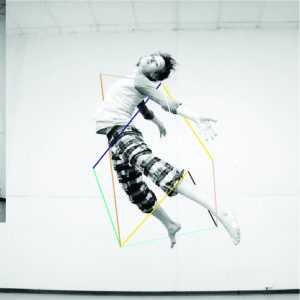
Olga Tsvetkova KOREOGRAAFILINE LABOR
29.-31. jaanuar 2018
E-K kell 11.30 – 15.30
Labori peamiseks keskmeks on tuvastada/avastada ja ellu viia koreograafia loomise erinevaid lähenemisviise. Avastame erisuguseid võimalusi oma ideede viimiseks teatraalsesse ja mitte-teatraalsesse ruumi läbi valguse, heli, keha, teksti ja liikumise. Iga päev keskendume ühele nimetatud teemadest, otsides võimalust viia vaatajani sama teema läbi erinevate teatrist, tantsust ja visuaalkunstist pärinevate tööriistade ja mehhanismide.
- päev. Heli ja keha.
Liikudes tekitame heli. Heli tekitades loome liikumist. Heli koreograafia. - päev. Teksti ja liikumise suhe.
Narratiivne / abstraktne liikumine versus narratiivne / abstraktne tekst. Miks me kasutame tantsulavastustes kõneldud keelt? - päev. Mitteteatraalne ruum. Kuidas tuletada etenduse sisu ja vorm ruumi omadustest?
Iga päeva lõpus viime teineteisele läbi materjali avaliku näitamise, millele järgneb diskussioon.
Olga Tsvetkova sündis 1984. aastal Venemaal Jekaterinburgis. Ta lõpetas õpingud Amsterdami Tantsu- ja Koreograafiakoolis (School for New Dance Development) 2013. aastal.
Hiljuti on Olga omandanud magistrikraadi Amsterdami Kunstide Ülikoolis (DAS theatre, endine DASARTS programm).
1997.-2006. aastani tegutses Olga aktiivselt vene eksperimentaalse teatri ja kaasaegse tantsu underground-skenel. Ta kuulus Sasha Pepeljajevi “Kineetilisse teaterisse” ning osales kõigis kompanii lavastustes. 2006. aastal suundus Olga Amsterdami, kus osales koreograafide Deborah Hay (grupilavastus SNDO-s, 2009) ja Benoit Lachambre’i lavastustes (“Snake charming ball” SNDO-s, 2011).
Hetkel huvitab Olgat peamiselt etendamine ja selle suhe koreograafiliste partituuridega, mille kaudu loomingulises töös aega ja ruumi vormida. Samas usub ta ka, et kunst on üllatuslik, see ei saa olla kalkuleeritud, vaid on kui jahisaak. Olga tunneb ühendust nähtustega, mis põrkuvad ja vastanduvad teineteisele, põrkumine omakorda loob erinevaid ruumi osi ja mahtu. Ühesuunaline liikumine kitsendab ja hävitab fenomeni. Ta otsib oma töödes siirust, loomulikkust ja täpsust. Olga loominguline kirg on pidev püüe anda oma tajude tundmustele vorm.
Tervemõistuslikkus ja teadus ei suuda meile midagi öelda asjade tegeliku olemuse kohta või kirjeldada meie suhet sellega. Meie loogika ja keel ei ole lõppude lõpuks midagi muud kui käepärane, kasulik – ja alati isegi mitte kasulik – väljamõeldis. Seetõttu koosneb Tsvetkova uskumuste süsteem tähendusetusest ja mõttetusest: need suudavad pakkuda kogemuseülest tähendust, mis ühtaegu kinnitab ja eitab meie inimlikke arusaamu. Oma loomingulises praktikas huvitab teda leida viis värske pilguni tagasi jõuda, s.o. võime vaadelda nähtuseid nendega justkui esmakordselt kokku puutudes. “Kunst ei peitu mõistuses. Kunst on silmas, kõrvas, meie tajude mälus”.
Hind: 25 eur kord / 60 eur kolm korda
20 eur / 50 eur (Õpilastele ja Eesti Tantsukunsti ja Tantsuhariduse Liidu liikmetele)
Töötuba toimub inglise keeles.
Toetajad Eesti Kultuurkapital ja Eesti Kultuuriministeerium
TantsuRUUMi üldkontakt: Jane Miller-Pärnamägi / jane@tantsuagentuur.ee
___eng___
Olga Tsvetkova CHOREOGRAPHY LAB
29.01-31.01
Mon-Wed 11.30 – 15.30
The main focus of the laboratory is to locate/discover and manifest different approaches in the act of creating choreography. We will detect several possibilities of translating your ideas to the theatrical and non-theatrical space by the means of light, sound, body, text and movement. Every day will be dedicated to one of these topics; we will be searching for the possibility to present the same subject/theme to the spectator through the use of different tools and mechanisms, derived from theatre, dance and visual arts.
- Day. Sound and body. While moving we produce sound. While making sound we produce movements. The choreography of sound.
- Day. The relationship between text and movement. Narrative / abstract movement versus narrative / abstract text. Why do we use a spoken word in dance pieces?
- Day. Non-theatrical space. How to derive the content and form of the performance from the characteristics of the space?
In the end of each day we will organize showings of sketch material to each other followed by a discussion.
Olga Tsvetkova was born in Yekaterinburg (Russia) in 1984. She has graduated from Dance and Choregraphy (School for New Dance Development) at Amsterdamse Hogeschool van de Kunsten in 2013.
Recently Olga has obtained a Master Degree of DAS theatre (former DASARTS program).
From 1997 to 2006 Olga has been very active in the underground scene of contemporary dance and experimental theatre in Russia. She was part of Sasha Pepelyaev “Kinetic theatre”, where she has been participated in all company’s creations. In 2006 Olga has moved to Amsterdam, where she has participated in works by Deborah Hey (mass choreography for SNDO, 2009) and Benoit Lachambre (Snake charming ball, SNDO 2011).
Currently Olga is interested in performance and specifically in relation to the choreographic scores that she applies in her artistic work to sculpt time and to construct the space. However, she also believes that art is a surprise, it cannot be calculated; it’s a prey, a catch.
Olga feels connected to the things that collide and contradict each other; the collision shapes different segments of space, it creates a volume. She believes that absence of collisions will narrow and kill investigated subject. In her works she seeks for sincerity, coexistence of nature and artificiality, and precision of her statement.
Olga’s artistic passion is a constant attempt to give a shape to the feelings of senses. Neither the language of common sense nor of science tells us anything about the ultimate nature of things or of our relation to them. All our logic, our language, is ultimately nothing more than a convenient, useful — and not even always useful — fiction.
Thus, Tsvetkova’s believe system today consists of non-meaning and non-sense that are able to suggest a transcendent meaning that simultaneously underpins and negates our human understanding. She is interested in finding a way to get back to low gaze (the ability to look at things as if you encounter them for the first time) in her artistic practice. “Art is not in the mind. Art is in the eye, in the ear, in the memory of our senses”.
Price: 25 eur per day / 60 eur all days
20 eur / 50 eur (students and Estonian Dance Arts and Dance Education Union members)
Workshop will be held in English.
Supported by Cultural Endowment of Estonia and Ministry of Culture.
For detailed information about TantsuRUUM contact: Jane Miller-Pärnamägi, jane@tantsuagentuur.ee